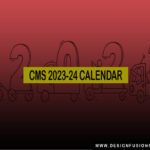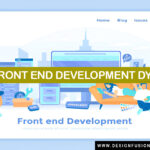Table of Contents
Introduction to 1980s Graphic Design
Welcome to the vibrant world of Nineteen Eighties image layout! The ’80s turned into a decade bursting with ambitious colors, daring typography, and groundbreaking innovations that also influence design nowadays. Whether you’re a pro clothier or just curious approximately the era, you’re in for a colorful journey thru one of the maximum dynamic durations in photograph design history.
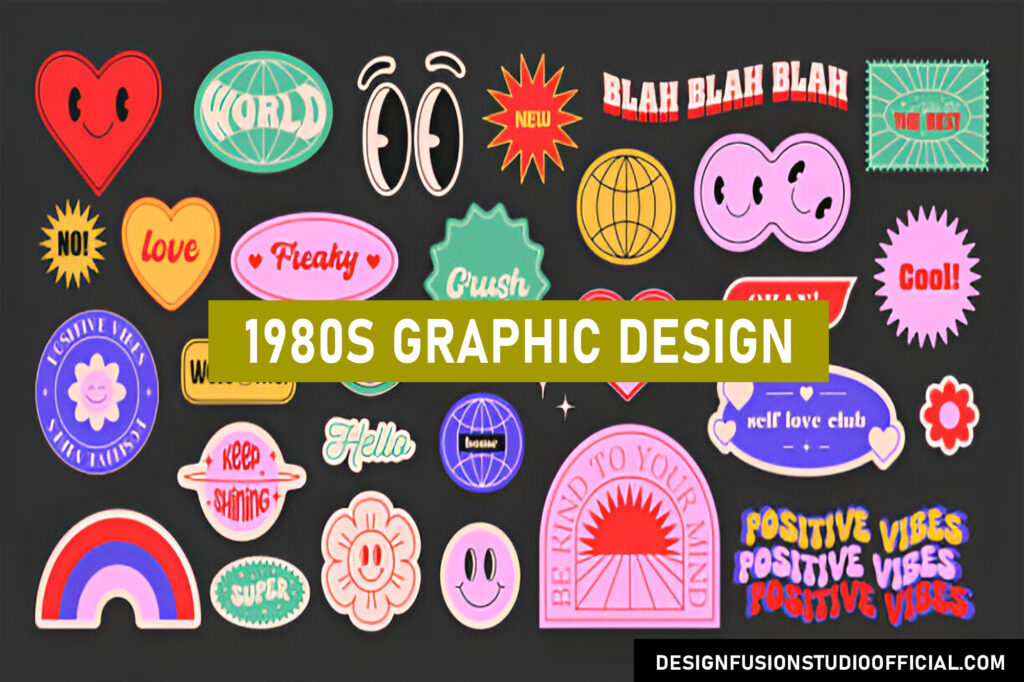
Historical Context: Setting the Scene
To absolutely admire 1980s photograph design, we want to apprehend the era’s broader context. The ’80s turned into a time of good sized social, cultural, and technological shifts. From the rise of private computer systems to the beginning of MTV, those adjustments had a profound effect on how designers approached their work.
The decade commenced with a feel of optimism and technological development. The launch of the Apple Macintosh in 1984 revolutionized the graphic layout industry, making effective design tools reachable to more humans than ever before. This technological bounce became coupled with a cultural backdrop of bold expression and experimentation, placing the degree for some absolutely iconic designs.
Technological Advancements: The Digital Revolution
One of the maximum giant modifications in 1980s image layout became the arrival of laptop publishing. Before this, design become a hard work-intensive technique involving bodily cutting and pasting. The creation of private computers and software program like Adobe Illustrator and Aldus PageMaker converted the enterprise, permitting designers to create and manipulate designs digitally.
The Apple Macintosh played a pivotal function in this revolution. With its user-friendly interface and powerful pics competencies, it has become the cross-to device for designers. This technological shift democratized graphic layout, allowing more humans to discover and create lovely visual works.
Influential Designers: The Pioneers of the ’80s
The Nineteen Eighties become a golden technology for image designers, with several figures growing to prominence and leaving an indelible mark on the industry. Paula Scherr, for example, have become known for her ambitious typography and playful designs that driven the boundaries of traditional picture layout.
Neville Brody, every other iconic determine, delivered a punk rock sensibility to photo design with his paintings for The Face mag. His use of unconventional typefaces and experimental layouts challenged conventional layout norms and inspired a new era of designers to assume outside the box.
April German is any other call that cannot be unnoticed. As one of the pioneers of virtual design, she embraced the brand-new equipment and technology of the generation, blending them with a specific, postmodern aesthetic. Her work exemplifies the progressive spirit of Nineteen Eighties photograph layout.
Memphis Design Movement: A Splash of Boldness
When we talk approximately Eighties graphic layout, we can’t forget about the Memphis Design Movement. Founded in Milan in 1981 by using Ettore Sot sass and a set of young designers, Memphis became all approximately breaking guidelines and having a laugh. They introduced vibrant colors, playful shapes, and a mix of textures that had been a stark departure from the minimalism that preceded them.
Memphis layout become characterized with the aid of its bold use of number one colorations, geometric shapes, and a standard experience of caprice. This movement had a profound effect on photograph layout, influencing the whole lot from product packaging to indoors design. Its playful aesthetic and rejection of conventional norms embodied the spirit of the 1980s.
Postmodernism in 1980s Graphic Design: Breaking the Mold
The Eighties noticed the upward thrust of postmodernism in picture layout, a movement characterized by using its rejection of the rigid policies and systems of modernism. Postmodern designers embraced eclecticism, layering, and a mixture of ancient references, developing work that became visually wealthy and often provocative.

This generation’s picture design changed into marked by way of an emphasis on individuality and experimentation. Designers like Wolfgang Weingarten driven the bounds of typography and layout, developing works that were as plenty about visible effect as they had been about conveying statistics. The postmodern approach allowed for an extra playful and expressive fashion, reflecting the cultural shifts of the time.
Typography Trends: Bold and Beautiful
Typography underwent a full-size transformation in the Eighties. Designers commenced to experiment with kind in methods that had by no means been seen earlier than. Custom typefaces, formidable fonts, and playful lettering became hallmarks of 1980s photograph design.
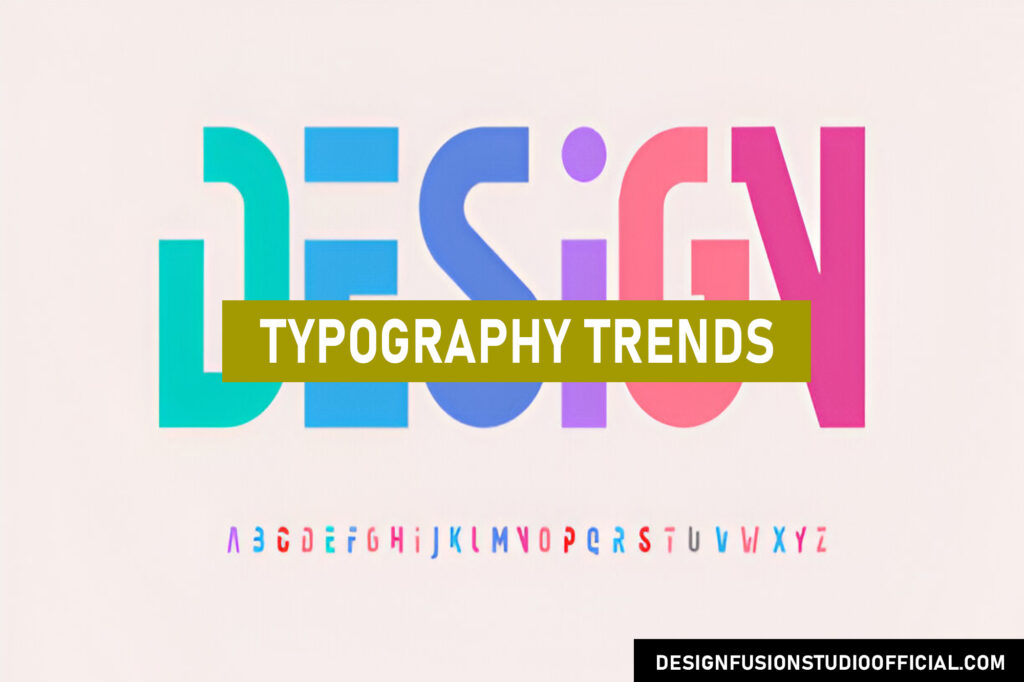
One of the maximum notable trends changed into using massive, ambitious typefaces that commanded attention. This changed into a departure from the greater reserved and functional typography of previous many years. Designers like Neville Brody and Paula Scherr used type now not just to convey information, however as a significant design detail, developing works that were each visually hanging and communicative.
Color Palettes and Schemes: Neon Dreams
If there’s one factor that stands out approximately Nineteen Eighties photograph layout, it’s the use of coloration. The ’80s had been all about ambitious, colorful colorations. Neon shades, especially, have become synonymous with the decade. These shiny, captivating shades were used in the whole thing from fashion to marketing, creating a sense of energy and pleasure.

Pastel shades additionally had their moment, frequently paired with ambitious geometric patterns. This mixture of neon and pastel created a one-of-a-kind look that turned into each playful and complicated. The use of shade in 1980s Graphic Design was now not pretty much aesthetics; it was a manner to seize the optimism and enthusiasm of the technology.
Album Cover Art: Visual Music
The 1980s become a golden age for album cover artwork. With the rise of MTV and music motion pictures, visible aesthetics have become a crucial part of a band’s identification. 1980s Graphic Designers performed a key role in creating those visible identities, generating some of the maximum iconic album covers of all time.
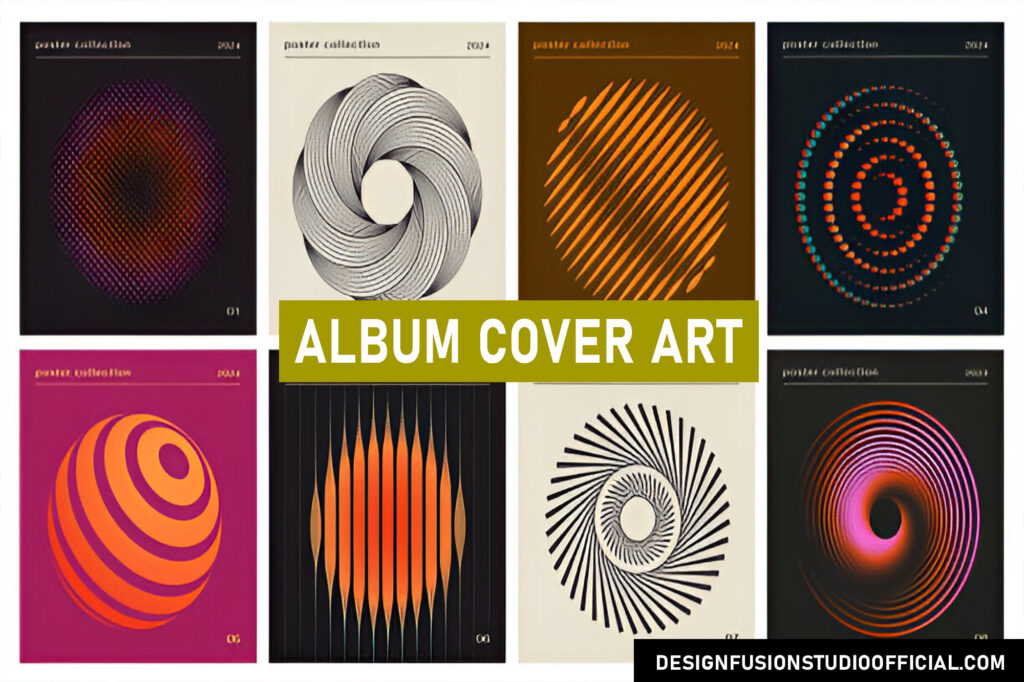
Think of the formidable, pop art-stimulated covers of artists like Duran or the futuristic, digital designs for bands like Depeche Mode. These album covers have been not simply packaging; they have been essential to the track’s branding and storytelling. The layout of an album cowl could make or break an artist’s image, and designers of the Eighties rose to the assignment with creativity and aptitude.
Advertising and Marketing: The Art of Persuasion
Advertising inside the Nineteen Eighties became a playground for picture designers. The technology’s financial growth led to accelerated opposition amongst manufacturers, which in flip spurred modern and appealing layout. From print advertisements to tv commercials, Nineteen Eighties image design performed a crucial position in shooting customer interest.
One of the maximum tremendous trends was the usage of bold, memorable slogans paired with striking visuals. Ads have been designed to be immediately recognizable and impactful. The famous “I Want My MTV” marketing campaign, for example, used brilliant colors and ambitious typography to create a sense of urgency and pleasure, flawlessly shooting the younger power of the channel.
Branding and Logos: Identity and Innovation
The 1980s changed into a transformative decade for branding and logo design. Companies began to realize the importance of a robust visual identification, and graphic designers were tasked with creating emblems that have been each memorable and flexible.
One of the most iconic trademarks of the technology is the Apple brand, which underwent a tremendous redesign in 1984. The new, rainbow-colored brand contemplated the agency’s modern spirit and technological prowess. Similarly, the rebranding of agencies like IBM and Coca-Cola for the duration of this era confirmed how powerful picture design could create a lasting company identity.
Magazine and Print Design: The Glossy Revolution
Magazines inside the 1980s have become showcases for present day picture design. Publications like The Face, Rolling Stone, and Vogue pushed the limits of layout, typography, and pictures. Designers experimented with ambitious layouts, striking pictures, and innovative typographic treatments, making magazines now not just resources of information however work of artwork.
The layout of those magazines regularly contemplated the wider cultural traits of the time. For instance, the punk aesthetic of The Face mag, with its edgy typography and raw imagery, captured the rebellious spirit of the teenager’s subculture. This duration additionally noticed the rise of way of life and fashion magazines, wherein graphic layout performed a vital function in shaping and reflecting current tastes.
Video Game Graphics: Pixel Perfect
The 1980s became the decade that gave start to the video game industry as we are aware of it. With the rise of arcade video games and domestic consoles, graphic layout became an essential a part of the gaming enjoy. Designers had to work within the constraints of restrained era, the use of pixels to create engaging and visually appealing sport images.
Classic video games like Pac-Man, Donkey Kong, and Super Mario Bros. Are ideal examples of the way innovative design ought to overcome technological barriers. The pixel artwork of these games has an undying pleasant that keeps to inspire designers today. The vibrant colors, easy shapes, and attractive characters created a cultured that is immediately recognizable and loved through gamers global.
Fashion and 1980s Graphic Design: A Stylish Fusion
The Nineteen Eighties noticed a captivating intersection between fashion and 1980s Graphic Design. Bold, photograph styles and vibrant hues have been no longer constrained to published materials; in addition, they made their way into clothing and accessories. Designers like Vivienne Westwood and Jean-Paul Gaultier embraced photo factors, growing fashion that changed into as visually hanging because it turned into revolutionary.
Graphic tees have become a staple of ’80s fashion, regularly providing formidable logos, slogans, and popular culture references. The use of photograph design in fashion allowed for a brand-new degree of self-expression, with garb becoming a canvas for inventive and cultural statements. This fusion of fashion and image layout become a defining feature of the last decade, influencing developments and patterns for years to come.
Film and Television Graphics: Visual Storytelling
The Nineteen Eighties turned into a transformative decade for movie and television pictures. The advent of latest technology allowed for extra state-of-the-art visible outcomes and name sequences, enhancing the storytelling enjoy. Designers played a critical function in growing those visuals, from the long-lasting beginning titles of TV shows to the groundbreaking computer graphics in blockbuster films.
Think of the putting title sequences of indicates like “Miami Vice” or the innovative visible consequences in movies like “Tron.” These designs have been no longer simply ornamental; they were essential to the narrative, putting the tone and enhancing the viewer’s revel in. The use of photo design in movie and tv in the course of the Nineteen Eighties driven the boundaries of what turned into viable, developing lasting visual legacies.
1980s Graphic Design in Packaging: Beyond the Box
Packaging layout in the Eighties was all about creating an announcement. With the upward push of purchaser way of life, companies recognized the importance of appealing packaging to face out on crowded shop cabinets. Graphic designers have been tasked with creating packaging that changed into each practical and visually appealing, often the use of bold colorings, playful typography, and modern shapes.
One tremendous instance is the packaging for Apple products, which blended glossy design with consumer-friendly functionality. Similarly, the intense, geometric designs of Memphis-stimulated packaging created a sense of fun and pleasure, making everyday merchandise experience special. The emphasis on formidable, memorable packaging layout inside the Eighties set a new popular for the enterprise, influencing how products are advertised and perceived.
Experimental and Avant-Garde Design: Pushing Boundaries
The Eighties turned into a decade of experimentation and innovation in photo design. Designers were now not afraid to push obstacles and challenge conventions, developing works that have been bold, provocative, and often beforehand in their time. This experimental spirit became glaring in the whole thing from album covers to marketing campaigns, as designers explored new techniques and patterns.
One vicinity where this was particularly obvious was in the use of digital equipment. Designers like April German embraced the opportunities of digital layout, growing works that combined conventional techniques with new technology. This experimentation led to an extra dynamic and various photo layout landscape, with a wide variety of styles and procedures coexisting and influencing each different.
Educational Resources: Training the Next Generation
The 1980s saw a developing recognition of the importance of photograph layout schooling. Design faculties and applications commenced to flourish, imparting aspiring designers with the abilities and expertise had to be triumphant inside the enterprise. Institutions like the Rhode Island School of Design and the California Institute of the Arts became famed for their picture design packages, attracting talented college students from around the sector.
These academic establishments played an important role in shaping the future of picture layout. They furnished a area for experimentation and innovation, allowing college students to explore new ideas and strategies. The emphasis on each technical competencies and creative questioning helped to provide a new generation of designers who have been properly-ready to navigate the rapidly converting landscape of the Eighties photo design enterprise.
Political and Social Posters: Voices of Change
Graphic layout has continually been an effective device for conversation and persuasion, and the Eighties become no exception. Political and social posters became critical motors for expressing thoughts and rallying aid for numerous causes. Designers used ambitious imagery, putting typography, and effective messages to seize interest and encourage movement.
One superb instance is the “Silence = Death” marketing campaign with the aid of ACT UP, which used a easy, powerful design to elevate focus approximately the AIDS disaster. Similarly, posters advocating for environmental conservation, nuclear disarmament, and different social issues used image layout to carry their messages efficaciously. The ability of picture layout to influence public opinion and pressure social trade changed into a testament to its energy and versatility.
The Rise of Digital Art: A New Frontier
The Nineteen Eighties marked the start of a new technology in picture layout with the upward thrust of virtual art. As private computers and design software program became extra on hand, designers started out to explore the opportunities of making art digitally. This shift from conventional to digital techniques unfolded new avenues for creativity and experimentation.
Digital artwork allowed for extra unique manage over layout factors, making it viable to create intricate and complicated works that might had been difficult or impossible with conventional strategies. Designers like April German and David Carson embraced this new medium, growing works that mixed virtual and analog techniques to stunning impact. The upward thrust of virtual art in the 1980s set the stage for the technological advancements and layout innovations that would comply with in the decades to return.
1980s Graphic Design in Public Spaces: Art for All
The Eighties saw a surge in graphic layout in public areas, from murals and avenue art to public installations and signage. This trend become driven with the aid of a choice to make artwork greater handy and to apply public spaces as canvases for creative expression. Graphic designers played a vital role in remodeling city environments, making them greater vibrant and engaging.
One first rate example is the paintings of artist and fashion designer Keith Haring, who’s ambitious, picture work of art introduced artwork to the streets of New York City. His use of simple, iconic imagery and bright hues made his paintings instantly recognizable and available to a huge audience. Similarly, the usage of image layout in public installations, which includes the colorful signage in public parks and transportation structures, helped to create more visually attractive and person-friendly environments.
Graphic Novels and Comics: Visual Narratives
The 1980s become a pivotal decade for graphic novels and comics. As the medium gained mainstream attractiveness, graphic designers and illustrators pushed the boundaries of visible storytelling, developing works that have been both artistically innovative and narratively compelling. This length noticed the upward push of iconic image novels like “Maus” through Art Spiegelman and “The Dark Knight Returns” by using Frank Miller.
These works blended sophisticated storytelling with hanging visual design, elevating the comic e-book format to new heights. The use of formidable, dynamic layouts, revolutionary panel designs, and expressive typography allowed creators to carry complicated emotions and ideas. The photograph novels and comics of the Eighties validated the energy of picture layout to tell testimonies in ways that have been both visually and emotionally impactful.
Photography and 1980s Graphic Design: A Dynamic Duo
The integration of pictures and photo layout reached new heights in the Nineteen Eighties. Designers commenced to experiment with blending photographic imagery with photo factors, creating works that have been visually putting and conceptually rich. This fusion of photography and layout became evident in everything from album covers to magazine layouts and advertising campaigns.
One terrific instance is the paintings of dressmaker and artwork director Tibor Kalman, whose use of pictures in his designs for Esquire mag pushed the boundaries of traditional editorial layout. By combining bold typography with powerful photographic imagery, he created layouts that have been both visually attractive and notion-frightening. The use of images in graphic layout allowed for a more dynamic and layered technique, adding depth and dimension to the visual narrative.
Legacy and Influence on Modern Design: Enduring Impact
The impact of Eighties photograph design continues to be felt today. The bold, experimental spirit of the decade laid the basis for many of the layout developments and improvements that followed. The use of digital tools, the emphasis on bold typography and colorful hues, and the mixing of different visual factors have all grow to be staples of current image design.
Many of the designers who rose to prominence within the 1980s maintain to influence the sector these days, both via their ongoing work or through the designers they’ve inspired. The legacy of Eighties picture layout is obvious in everything from modern branding and advertising to digital artwork and web layout. The boldness, creativity, and innovation of the last decade set a general for excellence that maintains to encourage designers round the sector.
Conclusion: Celebrating the 1980s Graphic Design
In end, the Nineteen Eighties became a transformative decade for picture design, characterized by means of bold experimentation, technological innovation, and a spirit of creativity that maintains to inspire designers nowadays. From the rise of virtual equipment to the effect of cultural movements like Memphis design and postmodernism, the Nineteen Eighties was a duration of dynamic exchange and growth for the sphere.
The legacy of Eighties photo design is clear in the enduring influence of its key figures, the ongoing popularity of its formidable and vibrant aesthetics, and the continued effect of its technological innovations. As we look returned in this thrilling length, we have a good time the creativity, innovation, and enduring impact of Eighties picture layout.
Read More: 25 Creative Gifts For Graphic Designers: Elevate Their Artistry With Thoughtful Presents
FAQs about 1980s graphic design
General Questions
- What was graphic design like in the 80s?
- Graphic design in the 1980s was characterized by bold colors, daring typography, and a mix of traditional and digital techniques. The era was marked by a playful and experimental approach, heavily influenced by technological advancements and cultural shifts.
- What was the design style in the 1980s?
- The design style in the 1980s was eclectic, with influences from postmodernism, Memphis Design, and a general trend towards bold, vibrant visuals. It often featured geometric shapes, bright colors, and unconventional layouts.
- What is the 80s pattern called?
- The 80s pattern is often associated with Memphis Design, which includes bright, clashing colors, geometric shapes, and playful, abstract patterns.
- What is 80s art style called?
- The 80s art style is often referred to as postmodernism, characterized by a mix of historical references, bold colors, and playful, experimental designs.
Influential Designers
- Who were some influential graphic designers in the 1980s?
- Influential graphic designers of the 1980s include Paula Scher, Neville Brody, April Greiman, and Tibor Kalman.
- What contributions did Paula Scher make to 1980s graphic design?
- Paula Scher is known for her innovative use of typography and bold, 1980s Graphic Design that challenged conventional norms.
- How did Neville Brody influence 1980s graphic design?
- Neville Brody brought a punk rock sensibility to 1980s Graphic Design, using unconventional typefaces and experimental layouts.
Technological Advancements
- How did technology impact graphic design in the 1980s?
- The introduction of personal computers and software like Adobe Illustrator and Aldus PageMaker revolutionized the industry, making design tools more accessible and allowing for greater experimentation.
- What role did the Apple Macintosh play in 1980s graphic design?
- The Apple Macintosh provided designers with powerful graphics capabilities and a user-friendly interface, significantly transforming the design process.
- What were some key design software tools in the 1980s?
- Key design software tools included Adobe Illustrator, Aldus PageMaker, and early versions of Photoshop.
Design Movements
- What is Memphis Design?
- Memphis Design is a movement founded in Milan in 1981, characterized by its bold use of primary colors, geometric shapes, and playful patterns.
- How did postmodernism influence 1980s graphic design?
- Postmodernism influenced 1980s graphic design by encouraging eclecticism, layering, and a mix of historical references, leading to visually rich and often provocative works.
Typography and Color
- What were the typography trends in the 1980s?
- Typography trends included the use of large, bold typefaces, custom typefaces, and playful lettering that served as central design elements.
- What color palettes were popular in 1980s graphic design?
- Popular color palettes included bright neon colors and pastel hues, often used in bold combinations to create vibrant and eye-catching designs.
Cultural Impact
- How did music influence 1980s graphic design?
- Music, especially with the rise of MTV, played a significant role in graphic design, with album covers and music videos showcasing innovative and bold designs.
- What impact did video games have on 1980s graphic design?
- Video games introduced pixel art and digital graphics, creating a new aesthetic that influenced broader design trends.
Media and Advertising
- How was graphic design used in 1980s advertising?
- 1980s Graphic Design in advertising utilized bold visuals and memorable slogans to capture consumer attention, often reflecting the decade’s vibrant and energetic spirit.
- What role did graphic design play in 1980s magazines?
- Graphic design transformed magazines into visual showcases, with innovative layouts, striking images, and experimental typography.
Fashion and Public Spaces
- How did fashion intersect with graphic design in the 1980s?
- Fashion and graphic design intersected through bold patterns, graphic tees, and the incorporation of design elements into clothing and accessories.
- How was graphic design used in public spaces in the 1980s?
- Graphic design appeared in public spaces through murals, street art, signage, and public installations, making urban environments more vibrant and engaging.
Art and Photography
- What was the role of photography in 1980s graphic design?
- Photography was integrated with graphic elements to create visually striking and conceptually rich designs, enhancing everything from magazine layouts to advertising campaigns.
- How did graphic design influence 1980s film and television?
- Graphic design influenced film and television through innovative title sequences and visual effects, enhancing the storytelling experience.
Packaging and Branding
- What trends defined 1980s packaging design?
- Packaging design in the 1980s was characterized by bold colors, playful typography, and innovative shapes, aimed at making products stand out.
- How did branding evolve in the 1980s?
- Branding became more focused on creating strong visual identities, with companies investing in memorable logos and cohesive brand aesthetics.
Legacy and Education
- How did 1980s graphic design education shape the industry?
- Design schools and programs flourished, providing aspiring designers with the skills and knowledge needed to succeed, fostering a new generation of innovative designers.
- What is the legacy of 1980s graphic design?
- The legacy of 1980s graphic design includes the ongoing influence of its bold aesthetics, technological advancements, and the pioneering spirit of its designers.
Specific Styles and Influences
- What is New Wave design?
- New Wave design is a style that emerged in the 1980s, characterized by a rejection of traditional typography rules, embracing more freeform and experimental approaches.
- What is Vaporwave, and how does it relate to 1980s design?
- Vaporwave is a genre that emerged in the 2010s, heavily influenced by 1980s aesthetics, including neon colors, digital art, and retrofuturistic themes.
Fun Facts and Trivia
- What are some iconic 1980s album covers?
- Iconic album covers include Michael Jackson’s “Thriller,” Prince’s “Purple Rain,” and Duran Duran’s “Rio,” all featuring bold, memorable designs.
- How did 1980s graphic design influence today’s design trends?
- 1980s graphic design continues to influence modern design through its emphasis on bold colors, playful typography, and the integration of digital tools, setting the stage for contemporary trends.


